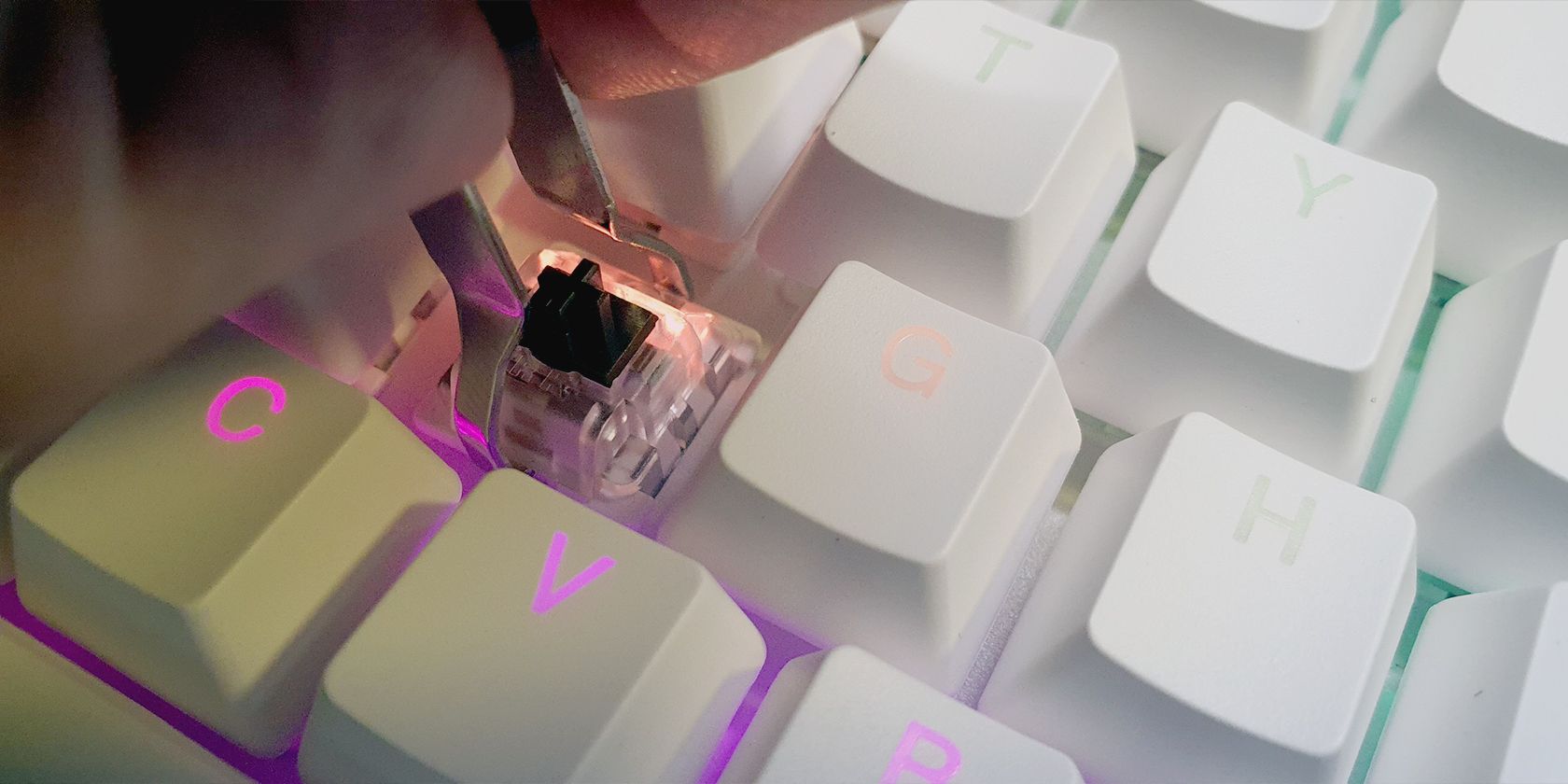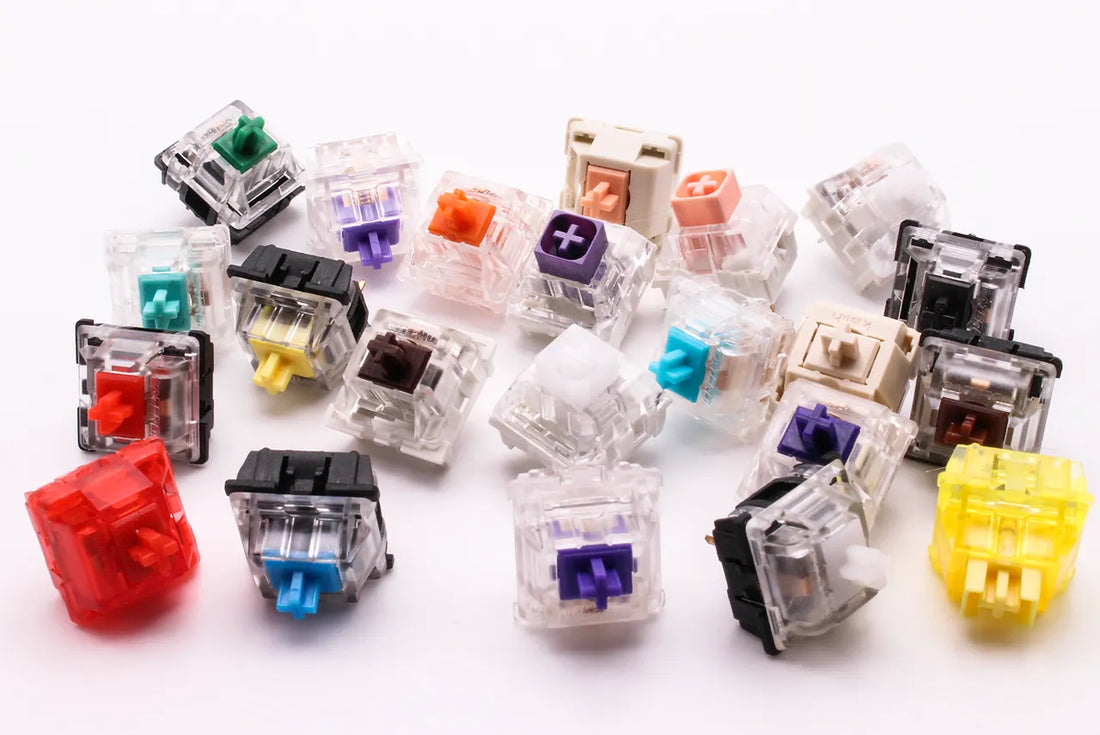Choosing the right switch for your keyboard boils down to three main options: linear, tactile, or clicky. Linear switches offer a smooth keystroke without any tactile feedback or audible clicks.
Tactile switches provide a gentle bump to indicate when a key press has been registered, but they lack the audible click. Clicky switches offer both tactile feedback and an audible click, providing a satisfying typing experience. These different switch options cater to varying preferences for typing feel and sound, making it crucial to select the one that aligns with your personal needs and preferences.
So, let’s dive deeper into the characteristics and advantages of each switch type to help you make an informed decision.

Credit: www.makeuseof.com
Linear Switches
When it comes to choosing the right switches for your keyboard, understanding the differences between linear, tactile, and clicky switches can make a significant impact on your typing experience. In this post, we’re going to focus on linear switches and explore their characteristics, pros, and cons to help you make an informed decision.
Characteristics
Linear switches are designed to provide a smooth and consistent keystroke from top to bottom without any tactile bump or audible click. They offer a straight, uninterrupted key press, making them ideal for fast typists and gamers who prefer a linear, quiet key feel.
Pros And Cons
Pros:
- Smooth and consistent keystrokes
- Quiet operation
- Fast response time
- Ideal for gaming and fast typing
- Minimal finger fatigue
Cons:
- Limited tactile feedback
- May lead to accidental key presses
- Not suitable for users who prefer a tactile feel

Credit: penguinpcs.shop
Tactile Switches
Tactile switches are a popular choice when it comes to selecting the right keyboard switch. These switches offer a distinct tactile bump and a quiet typing experience, making them a favorable option for many typists. Choosing the right tactile switch can significantly impact your typing experience, so let’s dive into the characteristics, pros, and cons of tactile switches to help you make an informed decision.
Characteristics
Tactile switches provide typists with a noticeable bump or resistance when the key is actuated, providing tactile feedback to the user. This tactile feedback allows for improved typing accuracy and a satisfying keystroke feel without the audible click commonly associated with clicky switches. Tactile switches are often preferred by individuals who desire a balance between typing comfort and audible feedback.
Pros And Cons
Pros:
- Provides tactile feedback for improved typing accuracy
- Quieter than clicky switches, making them suitable for office environments
- Offers a satisfying keystroke feel without the audible click
- Ideal for gamers and typists who benefit from tactile feedback
Cons:
- May not be as silent as linear switches
- Can have a slight learning curve for new users
Clicky Switches
Clicky switches are known for their distinctive click sound and tactile feedback, providing a satisfying typing experience.
Characteristics
- Distinctive audible click sound
- Strong tactile feedback
- Typically require more force to actuate
Pros And Cons
| Pros | Cons |
|---|---|
| Satisfying typing experience | Can be loud in shared spaces |
| Precise actuation point | May fatigue fingers with prolonged use |
| Improved typing accuracy | Not suitable for noise-sensitive environments |
Key Factors To Consider
Choosing the right switch for your keyboard can greatly enhance your typing experience. There are three commonly used types of switches – linear, tactile, and clicky – each offering a unique set of advantages. When making your decision, it’s crucial to consider key factors such as typing experience, noise level, and actuation force. Let’s dive deeper into each of these factors:
Typing Experience
The typing experience is determined by the way a switch feels when you press down on it. Linear switches have a consistent and smooth keystroke from top to bottom, making them ideal for fast typists. On the other hand, tactile switches provide a noticeable bump in the middle of the keystroke, giving you tactile feedback and a satisfying feel. Lastly, clicky switches not only have a tactile bump but also emit an audible click sound with each keystroke, providing both feedback and an auditory experience.
Noise Level
Noise level is another critical aspect to consider, especially if you’ll be using your keyboard in a shared workspace or a noise-sensitive environment. Linear switches are known for their quiet operation, as they lack the tactile bump and audible feedback. Tactile switches produce a moderate noise level, with the bump typically resulting in a slight sound. Clicky switches, on the other hand, have the loudest noise level due to the combination of the tactile feedback and audible click, which can be satisfying for some users but distracting for others.
Actuation Force
Actuation force refers to the amount of pressure required to register a keystroke. It is essential to choose a switch with actuation force that matches your typing style and preferences. Linear switches typically have a consistent force throughout the keystroke, making them light and easy to press. Tactile switches usually have a slightly higher actuation force due to the tactile bump, which offers more resistance. Clicky switches often have a heavier actuation force, providing both tactile feedback and a noticeable resistance.
Choosing The Right Switch For Your Needs
When it comes to selecting the perfect switch for your keyboard, understanding the different options available is key. The type of switch you choose will greatly impact your overall typing experience. There are three main types of switches to consider: Linear, Tactile, and Clicky. In this article, we will explore each switch type and provide guidance on which is best suited for specific needs, such as gaming, typing, and programming.
Gaming
If you’re a gaming enthusiast, having a responsive and precise keyboard is crucial for keeping up with the fast-paced action. When it comes to gaming, the linear switches are often preferred. These switches have a smooth keystroke, which means they offer little resistance and allow for rapid and effortless key presses. This makes linear switches ideal for games that require quick reflexes and continuous button mashing, such as first-person shooters and fighting games.
Typing
For those who spend a significant amount of time typing, whether for work or pleasure, finding a switch that offers both comfort and accuracy is essential. Tactile switches are widely regarded as the best option for typing. These switches provide a noticeable bump when pressed, offering tactile feedback that helps improve typing accuracy and reduces the chances of accidental key presses. With tactile switches, typists can enjoy a satisfying tactile feedback in every keystroke, enhancing the overall typing experience.
Programming
When it comes to programming, having a keyboard that can keep up with your coding skills is crucial. The clicky switches are often favored by programmers due to their distinct click sound and tactile feedback. This audible and physical feedback helps programmers confirm whether a keypress has registered, ensuring accuracy and preventing any missed or accidental key presses. Additionally, the crisp click sound can be quite satisfying, giving programmers a sense of confirmation with each keystroke.
Now that you have a better understanding of the different switch types and their suitability for various needs, you can make an informed decision when choosing the right switch for your keyboard. Whether you’re a gamer, typist, or programmer, finding the perfect switch will greatly enhance your overall typing experience, accuracy, and productivity.
Popular Keyboard Switch Brands
Explore top keyboard switch brands and discover the differences between linear, tactile, and clicky switches to find the ideal fit for your typing preferences. Dive into the world of mechanical keyboards, where each switch type offers a unique typing experience tailored to individual needs.
Comparison Of Brands
In the realm of keyboard switches, several popular brands stand out for their quality and performance. Let’s compare the top brands:
| Brand | Type | Key Features |
|---|---|---|
| Cherry MX | Linear, Tactile, Clicky | Consistent actuation force |
| Razer | Linear, Tactile | Customizable RGB lighting |
| Corsair | Linear, Tactile, Clicky | Durable construction |
Recommendations
- Consider the Cherry MX switches for a reliable typing experience.
- Opt for Razer switches if you prefer customizable lighting options.
- Choose Corsair switches for durability and tactile feedback.
Frequently Asked Questions Of Choosing The Right Switch For Your Keyboard: Linear Vs. Tactile Vs. Clicky
Should I Get Linear Tactile Or Clicky?
Clicky switches provide audible feedback while linear tactile switches offer a smooth keystroke. The choice between them depends on personal preference for sound or a more silent typing experience.
What Sounds Better Linear Or Tactile Switches?
Linear switches offer a smooth and consistent keystroke experience, making them popular for gaming. Tactile switches provide a noticeable bump when pressed, which can help with typing accuracy. Choose based on your preferences for gaming or typing.
Should I Get Linear Or Tactile Keyboard For Gaming?
For gaming, choose a tactile keyboard for precise feedback and accuracy. Linear keyboards may offer faster keystrokes but lack tactile response.
Why Do People Like Clicky Keyboards?
People like clicky keyboards for the tactile feedback and satisfying sound they provide while typing. The clicky sensation can enhance typing speed and accuracy, making the overall experience more enjoyable. It’s a matter of personal preference and the sensory experience it offers.
Conclusion
In deciding between linear, tactile, or clicky switches for your keyboard, consider your typing preferences. Each switch type offers unique feedback and characteristics that can enhance your typing experience. Experiment with different switch types to find the one that best suits your needs and enhances your productivity and comfort.



